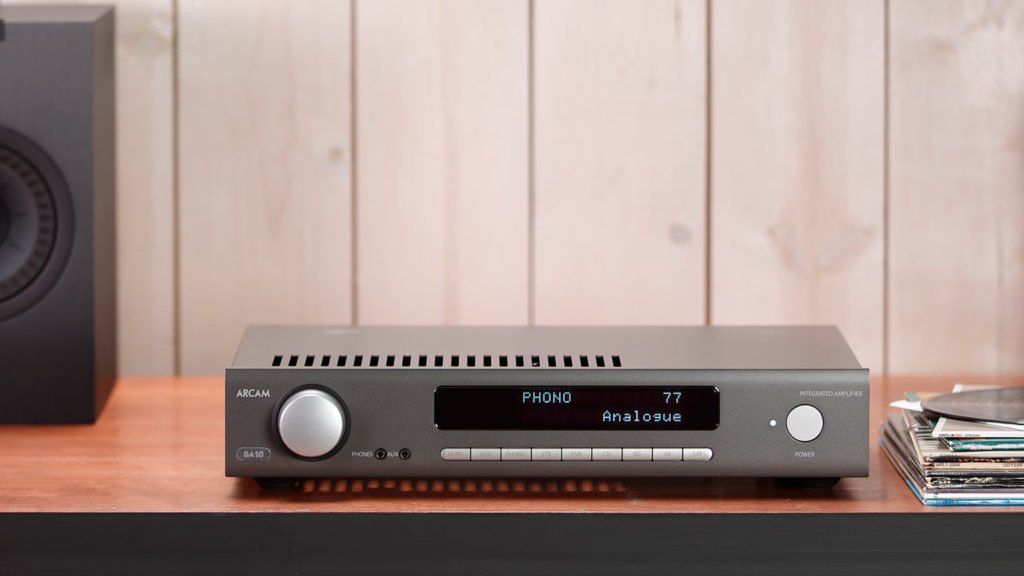
An amplifier is an electronic device or circuit used to increase the current, voltage, or power of a signal. It amplifies the signal applied to its input to produce an augmented version. A typical example is an audio amplifier that amplifies a microphone sound or another sound source from a DVD or CD. You find that, because the power supply voltage is low, the amplifier increases the magnitude of the current. The audio amplifier is connected to one or several speakers that convert the electrical signals into sound waves. Many of the electronic systems require amplification; therefore, amplifiers apply to almost all electronic devices. Note that amplifiers only increase the amplitude, but the other features such as frequency remain the same. According to their functions or the type of signal they boost, there are many types of amplifiers. -Sound amplification is most common to live shows, music studios, concerts, or even when you’re building yourself a home studio. Check out MusicCritic as they reviewed the best microphone preamps in the market if you’re looking for one.
Types of amplifiers
There are three main types of amplifiers according to the parameter of their amplitude:
Current amplifiers
The current amplifier increases the current input to result in a higher current output. It has low input impedance but a high output impedance.
Voltage amplifiers
A voltage amplifier increases the magnitude of a given voltage to result in higher voltage output. It is the most widely used amplifier in electronic devices.
Power amplifiers
As the name suggests, power amplifiers increase the power output. To explain further, when you use power amplifiers such as RF Power Amplifiers, the output voltage and current are usually more significant than the input voltage and current. Power amplifiers are used in the last stages of a circuit. They are useful in amplifying different portions of waves, and depending on that, they are further classified into A, B, AB, and C.
The above listed are the main categories of amplifiers, but further classifications depend on the signal amplification. Let us look at them:
Audio-frequency amplifiers (AF Amplifiers)
As the name suggests, this type of amplifier amplifies audio frequency. In most electronic devices, audio frequencies range from 20Hz-20kHz. It is where audion amplifiers come in. They can be used to strengthen up to 100kHz. They supply audio frequency power that is useful in running loudspeakers. Today, most of the audio amplifiers are based on solid-state drives like transistors, but vacuum tubes were used to make them in the initial stages.
Radiofrequency amplifiers (RF Amplifiers)
When a radio frequency signal is low, a radio frequency amplifier helps boost the signal. Radiofrequency amplifiers are useful in driving the antenna of a transmitter. They are tuned amplifiers whose operating frequency is monitored by the tuned circuit. The best part is that these amplifiers are adjustable, depending on their purpose.
Radiofrequency amplifiers have a unique characteristic of low noise performance. Low noise amplifiers keep any background noise produced by the electronic device low since it operates shallow amplitude signals from the antenna. Therefore, these amplifiers are useful in the initial stages of a receiver. The RF test equipment is also a helpful tool that helps you analyze your system’s frequency, noise, phase, amplitude, and modulation.
Intermediate frequency amplifiers (IF Amplifiers)
These amplifiers increase the magnitude of immediate frequencies, such as in radios, TVs, and radar. They are useful in providing the maximum amplification of an electronic device before the signal’s information, whether audio or video, is demodulated.
In intermediate frequency amplifiers, the application is usually lower than the received signal’s operation level but more significant than the audio or video signals that the systems outputs. Here the electronic device type is the one that determines the operating frequency of an intermediate frequency amplifier.
Video amplifiers
Video amplifiers boost video signals in electronic devices to result in a higher video resolution for the display. However, its bandwidth depends on its application. For instance, in TVs, they move from 0Hz to 6mHz, and in radars, it can even be more. It transfers all the information about the image in the system of tv and radar. In simple words, video amplifiers apply to video equipment. You can use a video amplifier to amplify signals from computer monitors or DVDs. They can also boost the video resolution of small TVs usually installed in cars.
Ultrasonic amplifiers
These are used to amplify ultrasonic signals. Its frequencies usually range from 20-100kHz. They are useful in various applications such as ultrasound scans, ultrasonic cleaning, and remote control systems. Every category of ultrasonic amplifier operates at a small band of frequencies in the ultrasonic range.
Direct-coupled amplifiers (DC amplifiers)
Direct-coupled amplifiers come in handy to boost low-frequency signals. Typically, the output of one stage usually pairs with the input of the following stage. Widely used in most measuring tools and electrical control systems, DC amplifiers amplify a zero frequency in DC frequency.
Wideband amplifiers
Wideband amplifiers boost frequency bands in equipment, such as oscilloscopes. They can amplify from direct coupled to mire than 10mHz. They are especially helpful when you want to measure signals over a wide array of frequencies. Since they have a wide bandwidth, the gain is usually low.
Operational amplifiers
Operational amplifiers are useful in performing mathematical operations on voltages. These are applicable in the form of ICs, where they were earlier developed in the vacuum tubes. They have two input terminal, either inverting or non-inverting. They are useful as inverting amplifiers, difference amplifiers, summing amplifiers, among others.
Transistor amplifiers
Transistor amplifiers increase the magnitude of the input current or voltage signal. It is an electronic device, as well as an amplifier. Transistor amplifiers are well known by engineering students and are analyzed according to different configurations. We have a common gate, a common source, and a common drain. There are two primary categories of transistor devices, namely bipolar junction transistors and field-effect transistors. The logic behind it is that in bipolar junction transistors, a low current at the terminal base monitors the emitter and collector’s current. In contrast, in the field-effect transistors, low voltage at the gate monitors the voltage at the source and drain.
conclusion
Now you know the various amplifiers there are. When purchasing one, consider features such as noise, the frequency at which the amplifier operates, the maximum rate of change output, and the relation rate between the input and output signals’ magnitudes.








